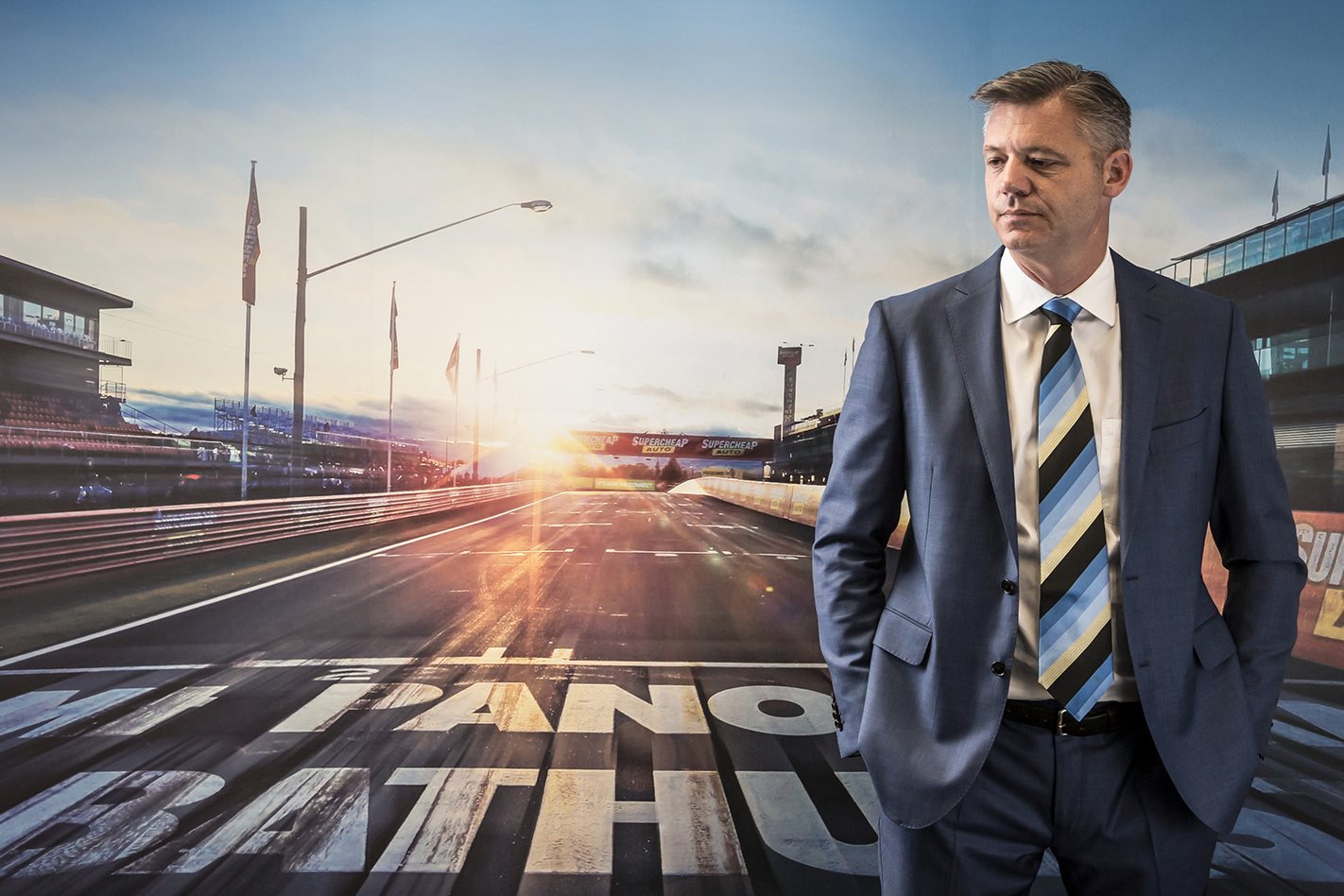V8 Supercars is still Australia’s top motorsport category, but for how long? CEO James Warburton talks candidly to Wheels about the rising GT3 threat, a future without Falcons and Commodores, and more.
James Warburton took over the running of Australia’s premier racing category in mid-2013 at a challenging – some say desperate – time in its history. He faced the real possibility of grabbing the controls of a potential train wreck.
Private equity firm Archer Capital had in 2011 controversially bought a majority shareholding in V8 Supercars Australia in a $130 million deal overseen by bombastic founding chairman Tony Cochrane. The teams were initially thrilled to divvy up a large pile of money from the sale, but quickly became concerned about Archer’s motives and its lack of motorsport expertise, leading to poor ongoing returns.
From the very start, the savvy, grown-up media had been distrustful of V8 Supercars’ imaginative attendance figures and TV ratings claims. A succession of off-shore races powered by Cochrane’s enthusiasm and intemperate aspirations for global dominance had tanked badly. Hello and goodbye Shanghai, Bahrain, Abu Dhabi, Hamilton and Austin. There was a stench about a government-supported street race at Sydney’s Homebush ramrodded by Cochrane and disgraced former NSW Labor minister Ian Macdonald. Many V8 Supercars staff, including some good people, were let go as Archer sought to stem fiscal haemorrhaging.
The Car of the Future, successor to the original and passionately tribal Holden versus Ford formula, bowed to a mixed reception in 2013. Though too late and too expensive, CotF did at least achieve some of its aims by attracting Nissan, Volvo and AMG to play alongside the founding ‘Aussie’ brands. But now Ford is officially out, and there will be no more Australian Holdens from next year.
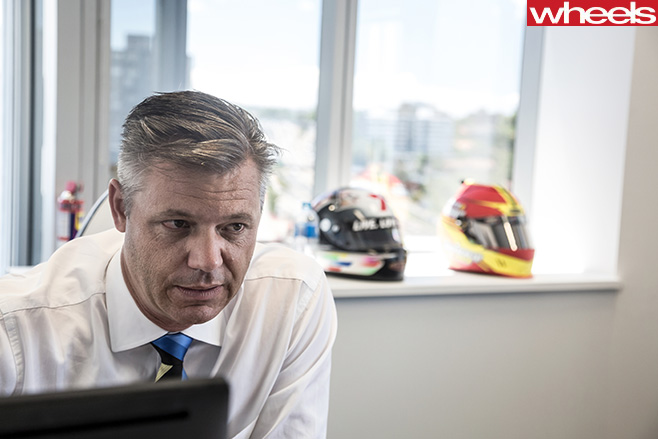
The alarm bells were sounding. Loudly. Welcome to V8 Supercars, James….
A former advertising and then television industry executive once tagged Mr Ambitious by Seven’s larrikin former boss David Leckie, Warburton has had to deal with more than one master and plenty of peripheral naggers and snipers in his two and a half years in the role. As well as Archer wanting a positive outcome, and the tough demands of team owners, there are hard-to-please fans firing away on social media. Plus some pesky media who, damn them, ask tricky questions. Try keeping that lot under control.
Using a generous array of marketing-speak, the impressively numerate Warburton paints a way rosier picture of V8 Supercars while rattling through a range of outcomes, all with a dollar value and growth included. His favourite word could be “incredible”. He sells hard and with a touch of evangelical conviction.
Warburton says the situation now is a far cry from the dark days of 2013 and 2014, when it was all in danger of falling over. “We’ve had a massive turnaround, anchored by a crucial new television deal with Foxtel [with marquee races also live on Ten] at the end of 2014. We’ve spent a long time professionalising the sport.”
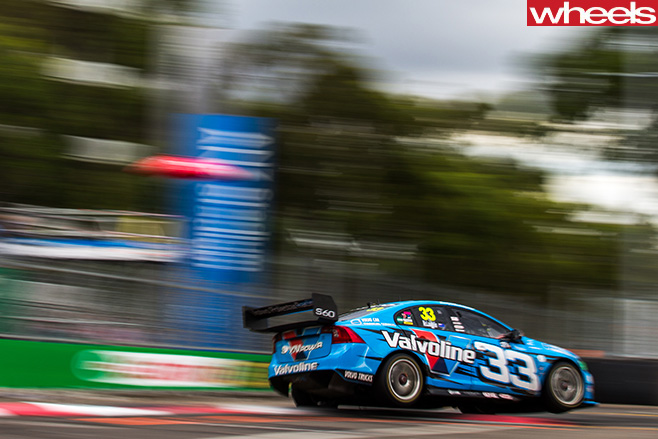
He anticipates participation by four or five “as mainstream as possible” brands by 2018-19. Holden is a certainty with a V6 turbo under development as an alternative to the current 5.0-litre V8. Highlighting a poor return on investment, the global head of Ford Motorsport has ruled out any return to V8 Supercars with Mustangs, which are eligible from 2017, but Warburton says Prodrive (previously FPR) may run non-factory Mustangs. He also says he won’t accept Ford’s decision as final until team co-owner Roger Penske, an influential figure in Detroit, tells him the Blue Oval is out irrevocably. With Betty Klimenko mothballing her AMG E63s in favour of Commodores, the tenuous Mercedes presence is over. And we know neither Lexus nor Mazda will be playing.
Gen2’s arrival represents a widespread opportunity to greatly reduce costs, says Warburton, with smaller teams given the opportunity to go from bespoke V8 programs to off-the-shelf offerings. There has been valid criticism that the CotF has been ridiculously expensive ($700,000 for a single car), forcing some V8 teams to live beyond their means. Holden and Ford 5.0-litre V8 engines cost about $100,000. Klimenko certainly paid way more than that for her AMG V8s. According to Warburton, team owners like Lucas Dumbrell could consider Holden’s Gen2 V6 turbos, saying they will be closer to $20,000. Sounds unrealistically cheap.
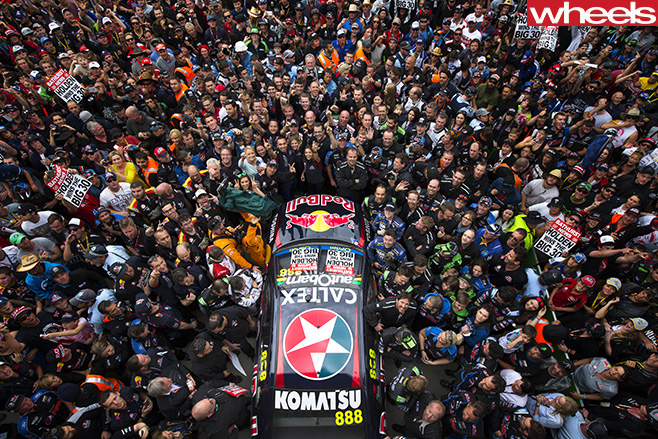
Archer, recently the subject of persistent rumours of wanting to sell, is now pleased with the returns, he says, adding: “If the business was for sale, I guarantee I’d know about it.” A recut profit-sharing deal with the shareholders has helped quell unrest among the teams; they welcomed a solid Christmas 2015 payment.
Warburton says race attendances were up three percent last year, and the audience watching on Foxtel/Ten were within one percent of the Seven numbers in 2014 (though well below the golden era of exclusively free-to-air telecasts). There are also the magazine shows on Foxtel and Ten, some replayed to death, on the TV boast sheet. Hold it, though, Jimmy; how many times can you count the same viewer?
“The Foxtel deal is one of the best integrated packages you can get with a broadcast platform – and we control it. Last year was a proof point for the new arrangement. But we always knew we’d be better off than with Channel Seven,” he adds before machine-gunning another bunch of numbers.
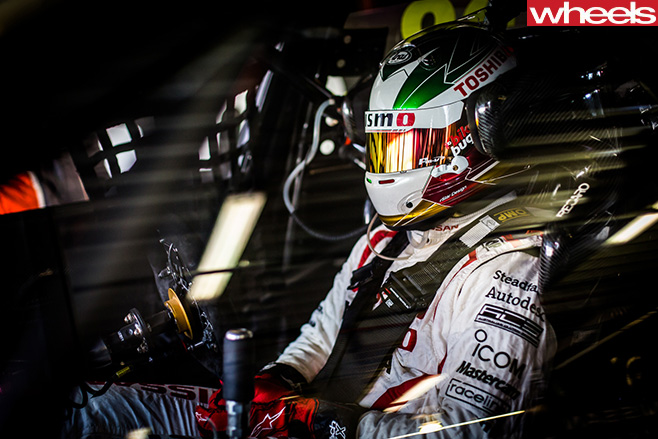
Punters certainly blasted Warburton on social media for swapping free-to-air eyeballs for big dollars from Foxtel, and initially vowed never to pay for what was traditionally free. They’re slowly coming around. Subscriptions are creeping upwards. Elsewhere, Facebook engagement is second only to AFL. Market researcher Repucom has produced a raft of charts bannering the glowing health of the V8 Supercars business.
“It was a big mountain to climb in terms of the health of the sport moving to a new broadcast model and getting back team and series sponsorship levels, and the income to teams, to a much stronger level. We had close to an 80 percent improvement in profitability, with 65 percent of those funds going back to the teams. It has had a stabilising effect across the field.”
With no prompting, Warburton declares his enthusiasm for the V8s revisiting the international stage with a street race in Kuala Lumpur in August. So it’s onwards and upwards, but watch where you step…
He seems unfazed when reminded of the consistent fails at all previous attempts to push into foreign parts. Are these guys slow learners? Warburton argues that the Abu Dhabi foray worked for V8 Supercars, at least financially. Surely, though, it’s not just about dollars and the prestige of racing at an F1 venue? None of these overseas races, including Abu Dhabi, made money for the promoter. Attendances were sparse everywhere bar Austin and Hamilton, and the time zones often didn’t suit Aussie viewing.
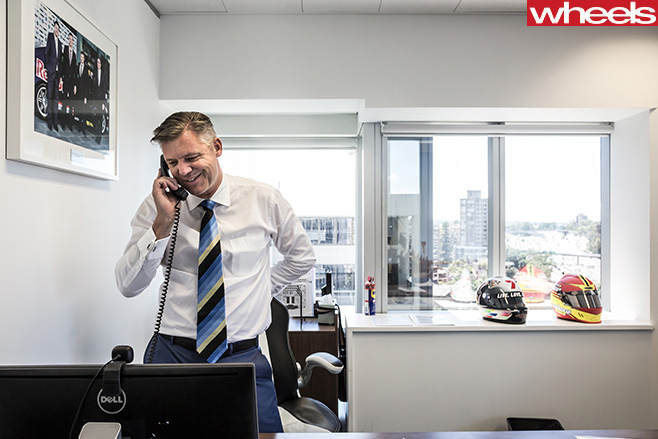
Asked why they shouldn’t just focus on keeping hard-core Aussie and Kiwi fans happy, Warburton declares: “For clarity, we are an Australian series with [potentially] a couple of international races a year… we’re not talking about dominating the region or anything ridiculous.”
While one new overseas venue is added to the calendar, a local one is heading for oblivion. Amazingly, after Cochrane fought and lobbied so fiercely to secure a race on the streets of Australia’s largest city, the current regime is about to euthanise the costly (to taxpayers and V8 Supercars) and unsuccessful Homebush experiment.
Warburton blames the failure on a poor venue choice and having four different stakeholders on site – the Olympic Park Authority, Royal Agricultural Society, Acer Arena and the Stadium.
“To be honest, Homebush was always a dud. It was a poor choice of venue. It worked the first year but it was dodgy from the start, crowd figures were bullshit, it never made money, it was such a blind obsession… The track is too flat, it’s too hot, GA [general admittance] spectators can’t see and it’s held too late in the year.”

Sydney is indeed a tough, fickle market, more so when the venue is a dog. But Supercars is now committed to remaining at Sydney Motorsport Park, a policy at odds with Cochrane’s politically motivated, publicly declared distaste for the venue.
The Sydney SuperSprint at SMP is one of nine race weekends on the calendar where V8 Supercars also acts as the event promoter. There are plans for a night event there, but the obvious question is who will pay for the floodlighting? “Lights there can be very cost-effective because it opens up significant amounts of extra trading time. The ARDC has a proposal into government. SMP is important to us. It’s a great facility. We’re thinking about a different approach there… a Big Bash-style show. It could happen as early as 2017, but it’s out of my control.”
Warburton is expressly animated about the season ahead: “Fans are going to see one of the most highly competitive seasons ever, with kick-arse racing right across the field.” The drumbeaters always say that, don’t they?
Still, he emphasises that Nissan is now making the power it needs to be at the pointy end and Volvo has its reliability issues sorted. As well, off-season musical chairs have set up some fascinating scenarios with spicy intra-team rivalries, which Warburton senses will create additional human interest stories.
“It’s fantastic to see the deck shuffled,” he remarked, rattling through several tantalising possibilities. For starters, Jamie Whincup versus Shane van Gisbergen versus Craig Lowndes at Triple Eight. And at Prodrive, Chaz Mostert mended and back to take on reigning champ Mark Winterbottom and talent-abundant newcomer Cameron Waters.
“What we say about our category is that any one of the drivers can win at any time.” Some 18 of the grid of 26 are already V8 Supercars winners. “We love to see multiple winners but not gimmicky or manufactured racing. We’ve got the tyre allocations back to where they should be and the Saturday sprints have tyre stops. So there’s a fair degree of change this season.”
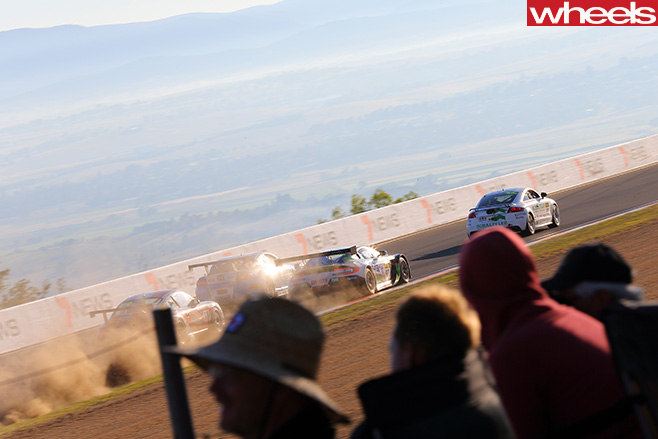
“In my time in television I worked with many athletes – Olympians and all the codes – and without doubt V8 Supercars drivers are the best to work with by a mile,” Warburton volunteers. “We need to work harder to drive our characters into the mainstream, to be prominent parts of our permanent sporting culture.”
Undoubtedly the drivers conduct themselves a little better than some of the not-so-smart stars of the footy codes….
“Our drivers are incredible role models but also great athletes with a high level of commitment to the sport. And, helped by the dollars that flow to them, the teams are incredibly professional.
“Behind garage doors too is a high level of collegiate business people. Having Roger Penske joining us last season [creating DJR-Team Penske] was a fantastic fillip for the series and a great endorsement when they expanded to a two-car team for 2016.”
But he concedes there is always room to improve and says his team is constantly analysing the product and asking itself the hard questions. Is that exciting high-octane entertainment? Is this the best touring car series in the world? Are the fans getting value?
The new season launched recently with a rapid-fire six events across 12 weeks thanks to a calendar compressed to make a powerful media impact.
Still, along the path back to rosy health, V8 Supercars has had to wrestle with the major sports – the football codes, cricket and tennis – for corporate bucks and media reportage. It also has constant struggles with cost containment while hard-core fans have to watch their race weekend budgets.
The series’ on-going challenge is the perception in many quarters that V8 Supercars is a show primarily for working class fans. It’s an image carried over from the two-make era of Holden versus Ford. This demographic positioning lingers at a time when consumers right across Australian society are increasingly demanding and buying more sophisticated, more upmarket products. Not just more premium cars, either.
Warburton argues that, like consumer expectations, Supercars is changing, evolving: “Our fans are no different to AFL and NRL. It’s family friendly. We are seeing more families to the street circuits, and like all sports we’re judged by our growth. In 2013-14 we’d plateaued; now we’ve got our mojo back.”
Attracting brands, especially those at the premium end, will continue to be tough. On the back of the news that Lexus is not jumping in and Erebus has dumped Mercedes-AMG, the global boss of Volvo Cars has indicated he’s not sure whether its commitment will extend beyond this year as it moves its Polestar performance division away from big engines towards power generation from electrification.
Nissan entered the category in 2013 and is now assessing its commitment to Gen2. It could swing away from the Altima body to a different model. It could switch powerplants, or stick with the V8 engine. Decision time is the end of March.
In light of the eternal battle to attract manufacturer support and satisfy the shareholders, Wheels asks why V8 Supercars doesn’t simply bin the current expensive regulations and adopt the increasingly popular international GT3 formula. Real supercars. With real benefits: cars are off-the-shelf units supplied by the manufacturer, and no more expensive than today’s V8 Supercars; the expensive parity process is overseen by the FIA; the large array of participating cars are poster exotics that today’s kids adore; and drivers relish jumping into these thoroughbred glamour machines. Opportunities would open internationally and regionally for the category and drivers.
Warburton seems bemused by the suggestion, acknowledges it would be a nice easy solution, but emphasises that ultimately it would not be a particularly successful one. His tranche of retorts starts with the statement that V8 Supercars doesn’t need a massive reset, and in any case he doubts the GT3 category would hit the spot with the heartland. TV rights would be an issue too. Six races might be doable, but 16 with a two-week turnaround on current budgets? Nup. Think of the repair bills. Forget it.
On a path to broaden the category’s appeal, Warburton also urgently prioritises female participation in Supercars, “hopefully by 2017” and not just as a publicity ploy. “We want a female driver on the grid on merit.”
Warburton insists he is also awake to the lightning technological change in the motor industry, and the need for Supercars to stay relevant to manufacturers into the future. He rules nothing out, including hybrids. But what of diesels, EVs and fuel cells (hydrogen)?
“The market relevance of V8 Supercars to manufacturers will be a key factor in the category’s continued future success in Australia and the region. Therefore we must be open to consider all types of powertrains in the future, in line with technical developments that occur within the automotive industry globally and in other motorsport categories.
“The potential to accept any new powertrain configurations will still require thorough assessment on the grounds of on-track performance, parity, costs, safety and market relevance,” he cautions.
And Warburton answers a final, obvious, question: “No, I don’t believe we will ever see a day when we don’t have V8 engines in the category.”

